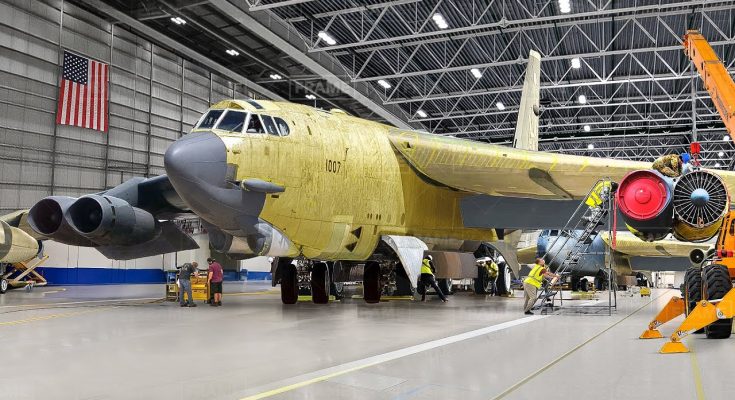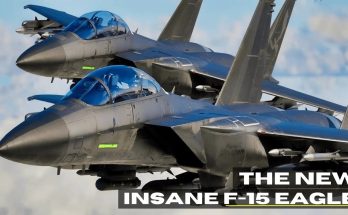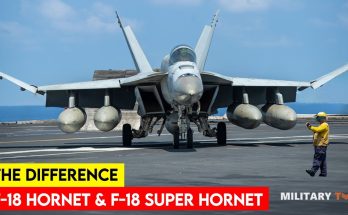The idea of rebuilding broken bombers inside a massive, restricted U.S. factory is a fascinating and somewhat secretive aspect of military aviation. These facilities are critical to maintaining the readiness and longevity of the U.S. Air Force’s strategic bomber fleet. Here’s an inside look at what happens in such a factory, and why it’s so essential for the U.S. military:
1. Highly Classified Facilities
-
The U.S. has specialized facilities where the most important work on its bombers—B-52 Stratofortresses, B-1 Lancers, and B-2 Spirits—takes place. These restricted factories are often located at military bases, such as Tinker Air Force Base in Oklahoma, and are heavily protected to ensure national security. They are highly classified because the work involves sensitive equipment and advanced technology related to nuclear capabilities and strategic bombing operations.
-
These factories are typically off-limits to the public and outsiders, with only authorized personnel allowed to enter. Inside, teams of engineers, technicians, and maintenance experts work tirelessly to ensure that the bombers are in peak operational condition.
2. Rebuilding and Overhauling Strategic Bombers
-
Rebuilding bombers is a crucial process that involves not just routine maintenance, but also extensive overhauls to ensure the aircraft remain viable for decades. For example, the B-52, which was first introduced in the 1950s, has been continuously updated with new avionics, engines, and systems to keep it relevant. Some B-52s are expected to remain in service until the 2040s or beyond, thanks to these extensive refurbishments.
-
In these factories, entire bombers are dismantled, inspected, and rebuilt. This includes replacing aging components, such as engines, flight control systems, avionics, and other critical systems. Aircraft may be completely stripped down, with their wings, fuselage, and landing gear undergoing extensive inspection and repair.
-
The process can take months or even years, depending on the scope of the refurbishment and the specific issues with the aircraft.
3. Engine and Structural Replacements
-
One of the most important aspects of rebuilding a bomber is ensuring that the engine and airframe can withstand the rigors of flight and heavy use. For older bombers like the B-52, the engine replacement program is critical. The B-52 has undergone numerous upgrades to its engines over the years, with modern CFM56 turbofan engines replacing the older engines to extend the aircraft’s lifespan and improve fuel efficiency.
-
Structural integrity is another critical element. The bombers undergo thorough inspections to ensure that the airframe is free from cracks, corrosion, and fatigue, which can be common in older aircraft. This includes examining the wings, fuselage, and tail sections, which bear the stresses of flight over decades of service.
4. Advanced Avionics and Modernization
-
The avionics in older bombers like the B-52 and B-1 are constantly being updated to keep pace with modern technological advancements. This involves installing new radar systems, communications equipment, and navigation systems, many of which are classified for national security reasons.
-
Modernization also focuses on making these aircraft more interoperable with newer technologies. For example, the bombers may be upgraded to work with more modern weapons and data-sharing systems, which allow them to communicate with other platforms (fighter jets, satellites, etc.) and execute more complex missions.
-
Specialized cockpit updates ensure that the pilot and crew have access to the latest displays, targeting systems, and mission planning tools, all while maintaining the reliability of older designs.
5. Weapons System Overhaul
-
Bombers like the B-2 Spirit are designed to carry a wide range of advanced weapons, including nuclear warheads and conventional bombs. These systems require constant maintenance and upgrades to ensure that the aircraft can deliver weapons with precision and in compliance with the latest defense protocols.
-
In these factories, the weapons systems of the bombers are inspected, and components like bomb bays, targeting systems, and delivery mechanisms are overhauled. The bombers may also be refitted with new payload options as defense needs evolve, keeping them flexible for a wide range of combat scenarios.
6. Simultaneous Upgrades Across Multiple Platforms
-
In some of these factories, the workload is staggering. There’s a constant stream of bombers coming in for repairs, upgrades, and overhauls. The factory is responsible for handling multiple bombers from different models at once, each requiring its own set of unique updates. This means that the factory staff must be highly skilled in working with a variety of aircraft systems and technologies.
-
The factory teams are highly trained in handling classified materials and working with sensitive technologies. Every part of the process, from engine overhauls to avionics upgrades, is executed with a high level of expertise and under tight security measures.
7. Support for Long-Term Strategic Readiness
-
The main goal of these rebuild operations is to ensure that the U.S. Air Force’s bomber fleet remains ready and capable for decades to come. Bombers are a key part of the United States’ nuclear deterrent, and their reliability is essential for maintaining global security.
-
These rebuilds allow bombers like the B-52, B-1, and B-2 to remain in operational status, ensuring they can respond quickly to any potential threats. By maintaining the fleet in such a way, the U.S. Air Force guarantees that its bombers are always ready to carry out their missions, whether in deterrence, combat, or strategic defense.
8. The Secretive Nature of the Work
-
Given the national security concerns surrounding the U.S. bomber fleet, much of the rebuilding process occurs behind tight security measures. The factories are often highly restricted, with only a limited number of personnel allowed access. Security clearances are required for everyone involved, and the facilities are often equipped with advanced surveillance systems and access control measures to prevent unauthorized access.
9. Advanced Technology for Future Bombers
-
The factories that rebuild these bombers are also often involved in preparing for the future. As part of the U.S. military’s efforts to modernize its long-range strike capabilities, facilities are preparing for the next generation of bombers, such as the B-21 Raider. The skills and technologies used in these rebuilding programs will inform the design and manufacturing of future aircraft, ensuring continuity and the readiness of U.S. airpower.
Conclusion: Keeping America’s Bomber Fleet Ready
The massive restricted U.S. factories that rebuild broken bombers are vital to maintaining the readiness of the U.S. Air Force’s strategic bomber fleet. Through extensive maintenance, upgrades, and overhauls, these facilities ensure that the U.S. bomber fleet remains effective and reliable, providing the backbone for national defense and nuclear deterrence. The secrecy and complexity of these operations reflect the importance of bombers in maintaining the security and strategic dominance of the United States.



